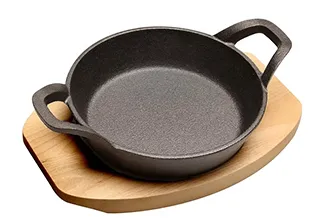
Exploring the Origins of the Term Dutch Oven in Cooking History
Why Do They Call It a Dutch Oven?
The term Dutch oven evokes images of hearty meals, family gatherings, and rustic charm. But have you ever wondered why this beloved cooking vessel bears the name Dutch? The origins of the term are steeped in history, culture, and a touch of culinary creativity.
To explore the name's origins, we need to go back to the 18th century when cast iron cookware started to gain popularity in Europe. At that time, the Dutch were renowned for their high-quality cast iron products. They developed a unique method of casting iron that resulted in strong, durable cookware. The Dutch were not only skilled artisans but also excellent marketers, exporting their goods across Europe and beyond. As they sold their wares, the name Dutch became synonymous with quality cast iron cooking pots.
Why Do They Call It a Dutch Oven?
The versatility of the Dutch oven is perhaps one of the key factors that contributed to its enduring popularity. This cooking vessel can be used on the stovetop, in the oven, or even over an open flame, making it an ideal choice for a variety of cooking methods. From braising meats to baking bread, the Dutch oven has proven itself in countless kitchens. In fact, one of the most celebrated uses for a Dutch oven is slow-cooking stews, which allows flavors to meld beautifully, resulting in rich and satisfying meals.
why do they call it a dutch oven

Throughout history, the Dutch oven has transcended cultural boundaries. In the early days of American colonization, settlers brought these cast iron pots with them, adapting to their new environments and utilizing them for campfire cooking. The practicality and durability of the Dutch oven made it a staple in both rustic and urban kitchens alike. It became a symbol of home cooking, representing comfort, tradition, and culinary creativity.
While the precise reason for the name might remain somewhat ambiguous, the function and reliability of the Dutch oven are unequivocal. Many cooks consider it an essential piece of cookware that can last for generations if cared for properly. The combination of cast iron's heat retention and even heating makes it invaluable for slow-cooked dishes, bread baking, and casseroles.
In modern times, the Dutch oven has seen a resurgence in popularity, fueled by the rise of artisanal cooking and the farm-to-table movement. Food bloggers and home chefs alike are rediscovering the joys of cooking with a Dutch oven, sharing recipes and tips on social media and food websites. They celebrate its ability to create delicious meals with minimal effort, emphasizing the ritualistic aspect of gathering around the table to share good food.
In conclusion, the term Dutch oven reflects a blend of historical ingenuity, cultural exchange, and culinary heritage. Whether you’re preparing a family meal or experimenting with new recipes, the Dutch oven stands as a testament to the timeless art of cooking. Its name may remind us of its Dutch origins, but its place in kitchens worldwide is a testament to its beloved status as a versatile, reliable, and indispensable cooking tool. So next time you set a Dutch oven on the stove or in the oven, you can appreciate not just the meal you’re about to create, but also the rich history behind this iconic cooking vessel.
-
Season Cast Iron Perfectly with GPT-4 Turbo TipsNewsAug.01,2025
-
High Quality Cast Iron Cookware - Baixiang County Zhongda MachineryNewsAug.01,2025
-
Premium Cast Iron Pan: Durable & Perfect HeatNewsAug.01,2025
-
High Quality Kitchen Durable Black Round Cast Iron Cookware Pancake Crepe Pan-Baixiang County Zhongda Machinery Manufacturing Co., Ltd.NewsAug.01,2025
-
Cast Iron Cookware - Baixiang County Zhongda Machinery | Nonstick, Heat ResistanceNewsAug.01,2025
-
High Quality Kitchen Durable Black Round Cast Iron Cookware - Baixiang County Zhongda Machinery | Non-Stick, Heat Retention, DurableNewsJul.31,2025


